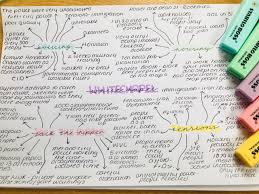The bottom up approach
Cards (11)
- Describe what is meant by investigative psychologyForm of bottom up profiling based on psychological theory
- State what is meant by geographical profilingForm of bottom up profiling based on pattern shown by locations of crimes
- State what is meant by the bottom up approachData driven approach where statistical techniques are used to make predictions about the likely characteristics of an offender
- State the three main aspects of investigative psychology
- Interpersonal coherence- people are consistent with behaviour so there will be links with elements of the crime and how people behave daily
- Forensic awareness- certain behaviours can reveal awareness of police techniques and past experience
- Smallest space analysis- based on the principle that connections can be made between crime scenes and offender characteristics. statistical technique developed by Canter identifying three underlying themes- instrumental opportunistic, instrumental cognitive and expressive impulsive
- State the three underlying themes of criminals established in smallest space analysisThemes discovered by David Canter and Gabrielle Salfati:
- Instrumental opportunistic- using murder to accomplish a goal and taking the easiest opportunities
- Instrumental cognitive- concern about being detected and therefore planning better
- Expressive impulsive- uncontrolled, in the heat of strong emotions, may feel provoked by victim
- What is circle theory?
- David Canter and Paul Larkin proposed offenders have a spatial mindset- commit their crimes in an imagined circle
- Marauder- offenders’s home is within geographical area where crime was committed
- Commuter- offenders home is outside geographical area- offender travels to another geographical area and commits crime
- What method is used to display spatial data of time, distance and movement to and from crime scenes?
- Criminal geographic targeting (CGT)
- related to time, distance and movement to and from crime scenes
- Computerised system developed by Rossmo
- Produces 3D map
- Map called jeopardy surface
- Colours indicate likely closeness to crime scene
- Evaluation of bottom up approach?
- 😊scientific basis- objective statistical techniques and computer analyses
- 😊useful in prioritising house to house searchers, however doesn’t distinguish between multiple offenders in that area (Rosmo)
- ☹️Gary Copson- surveyed 48 UK police forces, 75% said approach was useful but 3% said it helped identify offender , 75 cases use it/yr
- ☹️Canter and Larkin- difficult to distinguish between commuters and marauders (identified 91% marauders out of 45 sex offenders) limits usefulness of circle theory
- What are the two examples of the data driven bottom up approach?
- Investigative psychology
- Geographical profiling
- how were the 3 themes in smallest space analysis identified and who identified them?
- David Canter and Salfati
- analysed co-occurrence of 48 crime scene and offender characteristics taken from 82 UK murder cases where the victim was a stranger
- true or false? geographical profilers are concerned with who rather than whereFALSE- concerned with where rather than who
